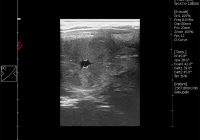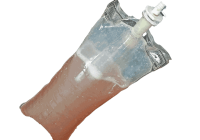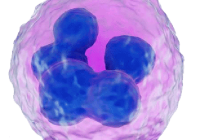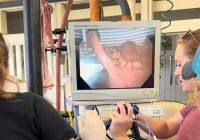The Effect of Uterine Interference on Reproductive Function in the Mare An unpublished manuscript written in 1976 by John R Newcombe and W E Allen, Royal Veterinary College University of London Introduction It has been shown in several recent reports that irrigation or infusion of the uterine lumen of the mare during the luteal phase of the oestrous… Read More »
US CEM Outbreak – Update The CEM outbreak in Florida continues to produce new cases. The initial animal was a mare identified following breeding in May. Tracebacks commenced and to date there are a total of 43 cases, which include 16 domestic ponies (2 stallions, 1 mare, and 13 geldings), 14 riding horses of various breeds (all geldings),… Read More »
Repeated Embryo Loss in Mares is the Result of Retarded, Small for Age, Embryonic Vesicles. By Professor John Newcombe, BVetMed, MRCVS A Normal Foetus and then a Foal Will Eventually Result When a Normal Embryo is Produced: A Case Report ABSTRACT A twelve-year-old maiden/barren part-TB mare with otherwise limited reproductive history, was sent to an equine fertility clinic… Read More »
CEM Identified in Florida “A mare in Florida (FL) has been confirmed culture positive by the USDA APHIS National Veterinary Services Laboratories (NVSL) for Taylorella equigenitalis, the bacterium that causes contagious equine metritis (CEM). The affected mare, the breeding stallion, and one other mare are under quarantine. A comprehensive epidemiological investigation is being conducted including traceback and history… Read More »
Clean Culture and Cytology – Perhaps Not So Clean? For many years, the standard pre-breeding evaluation included a uterine swab culture alone. It was then determined that allegedly “clean” mares were not becoming pregnant, and further investigation showed that there were inflammatory cells present in the uterus, indicating some sort of irritant – usually a pathogen missed with… Read More »
Ozonated Sunflower Oil for Endometritis Treatment The overuse of antibiotics in medicine today – including equine reproduction – has led to searches for alternative novel treatment for endometritis in the equine, as well as in many other facets of the medical field. In human medicine and dentistry, ozone has been shown to be capable of killing Gram-positive and… Read More »
Is it Possible to Cause Earlier Regression of the Endometrial Cups to Permit a Return to Breedable Estrus in the Mare? Unique to the early equine pregnancy is the invasive trophoblast of the chorionic girdle and its formation of the endometrial cup cells which secrete equine chorionic gonadotropin (eCG). This invasion occurs between days 35–38 after ovulation. The… Read More »
Does Routine Monitoring for EVA Make a Difference? With the announcement this week of an outbreak of equine viral arteritis in PEI in Canada, a very reasonable question to ask is “does routine monitoring for EVA make a difference?” At the recent ISER meeting in Brazil, Kaps et al. reviewed the effects of monitoring and management practices on… Read More »
Canadian Equine Viral Arteritis! There has been an EVA outbreak in Canada reported in Prince Edward Island. Equine Viral Arteritis is predominantly a respiratory disease, which has reproductive implications. Symptoms vary dramatically from none (“asymptomatic”) to a wide variety which may present as any combination of the following: elevated temperature, depression, loss of appetite. Affected animals may also… Read More »
Endometrial Biopsy in the Mare – is one sample enough? An endometrial biopsy in the mare is a useful diagnostic to determine cellular health of the uterine lining which will be directly responsible for pregnancy maintenance once placentation has occurred. The biopsy score is correlated to the likelihood of live foal production by use of different scales, such… Read More »










